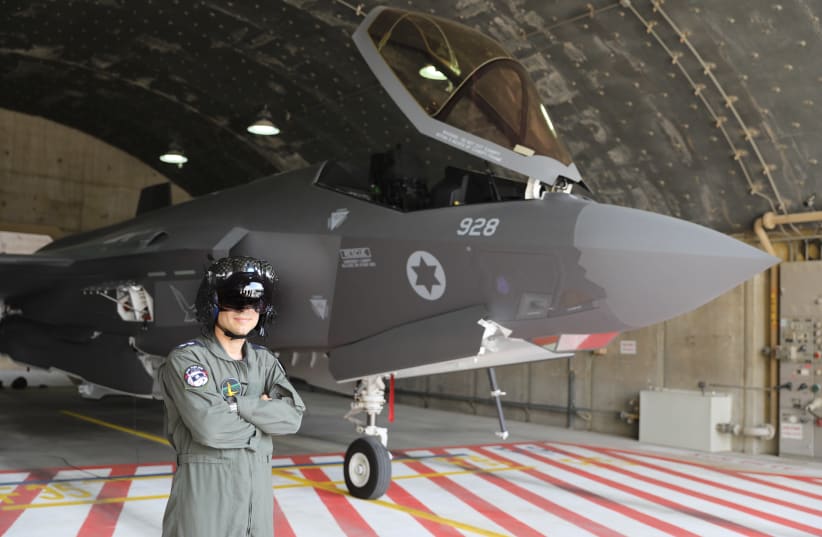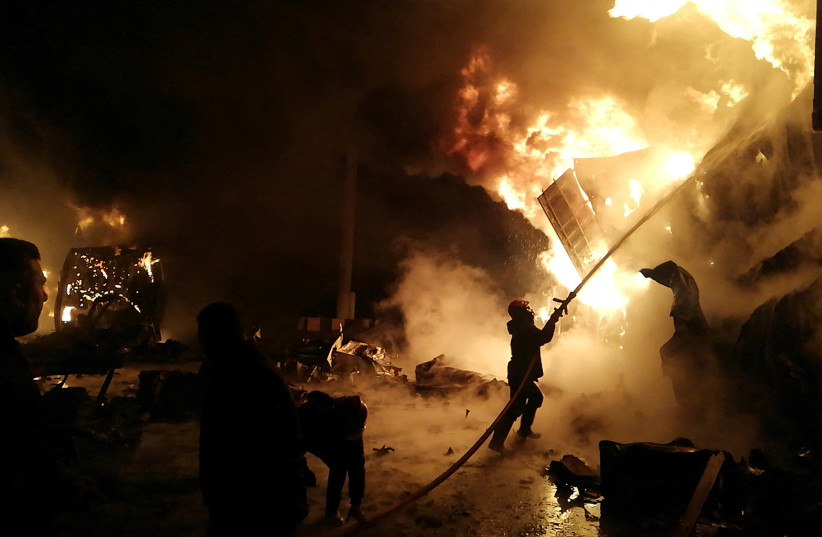Israel’s continued war-between-wars campaign has led to a decrease in Iran smuggling weapons into Syria, according to IDF Chief of Staff Lt.-Gen. Aviv Kohavi.
“The increase in the scope of operations over the past year has led to a significant disruption of all smuggling routes into various arenas by our enemies,” he told reporters on Sunday, ahead of New Year’s Day.
Israel has repeatedly warned about Iran’s nuclear ambitions as well as aspirations of regional hegemony. It has admitted to hundreds of airstrikes as part of its “war-between-wars” (known as MABAM in Hebrew) campaign to prevent the transfer of advanced weapons to Hezbollah in Lebanon and the entrenchment of its forces in Syria, where they could easily act against Israel.
In an attempt to halt Iran’s hostile regional activity, Israel has increased its operations in Syria. The firing of antiaircraft missiles by regime forces has also increased.
The military believes Iran, Syria and Hezbollah are deterred from war with Israel, as they rarely retaliate against Israeli strikes. When they do, they tend to target US bases.
The latest alleged Israeli strike on Tuesday morning targeted Latakia Port and destroyed an immeasurable amount of advanced and strategic weaponry.
However, the strikes have not been limited to Syria. Iran’s air, land and sea corridors did not function for 70% of 2021 due to operations carried out as part of the MABAM.
Kohavi said last year that the increase in operations, both overt and clandestine, had led to a slowdown of Iran’s entrenchment in Syria.
“But we still have a long way to go to complete our goals in this arena,” he said.
With the risk of regional war breaking out being low, and as Israel’s campaign against Iran in Syria is achieving satisfactory results, the MABAM will continue into the coming year, senior military officers have said.
During a visit to the Ramat David Air Force Base along with IAF Commander Maj.-Gen. Amikam Norkin and OC Strategy and Third Circle Division Maj.-Gen. Tal Kalman, Defense Minister Benny Gantz called on the countries in the region to stop Iran from harming their sovereignty.
The IDF had a year with “significant operational action,” Gantz said, adding that the military has dealt with threats on various fronts, “all of which are fueled by Iran, which is the greatest enemy to the citizens of Israel and the people of the Middle East.
“The Iranian regime cannot provide education or water to its citizens, but it continues to invest huge sums in its nuclear project and its proxies. Iran is undermining governance in Syria, Lebanon, Yemen and other countries, and it seeks to set the region on fire. I call on the countries of the region to stop Iran from harming its sovereignty and residents.”
Israel will not allow Iran to send balance-breaking weapons to its proxies to threaten Israeli citizens, he said.
“The IDF will continue to operate everywhere – in the air, on land and at sea – to ensure the security of the State of Israel,” Gantz said.
In addition to Israel’s policy of removing Iran from Syria, the regime of President Bashar Assad has been working with the Russians in an attempt to expel all foreign forces from Syria.
After Assad regained control of 60% of the country, the government has been trying to reassert itself as sovereign and expel Iran and its proxies, including Hezbollah and other Shi’ite militias. As Assad works with Russia, Israel will continue to take advantage of the situation to push Iran out.
While Israel’s strongest ally remains the United States, the IDF continues to work with Russia, a key influencer in the Middle East and especially in Syria, where it has leverage over Assad.
In addition to continuing the MABAM, the IDF is advancing plans for a military strike against Iran, to be prepared if or when the political echelon decides to carry out that strike against Tehran’s nuclear program.
During a speech at the Institute for National Security Studies conference in Tel Aviv last year, Kohavi said he had ordered the military to begin preparing renewed plans for a strike on Iran’s nuclear program.
“Iran can decide that it wants to advance to a bomb, either covertly or in a provocative way,” Kohavi said. “In light of this basic analysis, I have ordered the IDF to prepare a number of operational plans in addition to the existing ones. We are studying these plans, and we will develop them over the next year. The government, of course, will be the one to decide if they should be used. But these plans must be on the table, in existence and trained for.”
With tensions increasing over Iran’s nuclear program and regional hostility, both Israel and Iran have been threatening each other. Senior officers have said the military is capable of carrying out a strike. On Friday, at the end of five days of military drills, Iran fired 16 ballistic missiles toward a target simulating Israel’s nuclear facility in Dimona.
The IDF knows that should a strike be ordered, the response would be a multifront war with Hamas, Hezbollah and other Iranian proxies, firing thousands of rockets, including precision missiles, toward Israel and its strategic assets.
To prepare for such a scenario, the IDF has increased its intelligence-gathering capabilities for future operations, procuring additional weaponry, updating operational plans for all fronts, increased training exercises over the past year, and updated its target banks. Although the amount of precision weapons it has is 10 times the number it had on the eve of the Second Lebanon War, the IDF is continuing to procure a large amount of precision and special munitions.
The NIS 58 billion defense budget set for the IDF in the coming year is expected to allow the military to focus on the threats posed by Iran across the region, with NIS 3.5b. designated for this.
Intelligence and operational cooperation, along with joint exercises with foreign and regional countries, are also helping Israel’s security and are of great significance, the military believes.
A year after the signing of the Abraham Accords, which led to the normalization of relations with several Arab countries, the potential for cooperation and the building of significant military manpower is already evident.
The main threats to the country remain the rocket arsenals of Hamas and Hezbollah, Iran’s nuclear program, and potential nuclear weapon and infiltration forces such as Hezbollah’s Radwan Unit.
As tensions with Lebanon and Syria remained high, 31 rockets were fired from Lebanon and another two long-range rockets were fired from Syria. In response to the rockets fired from Lebanon (by Palestinians and Hezbollah), the IDF fired munitions from fighter planes and some 200 artillery shells.
The military also thwarted nine attempts to infiltrate from Lebanon and another two from Syria. It also confiscated 120 kilograms of drugs and 75 weapons over the past year.
Despite the ongoing tensions, the IDF views the overall strategic-security situation as having improved compared with previous years.

